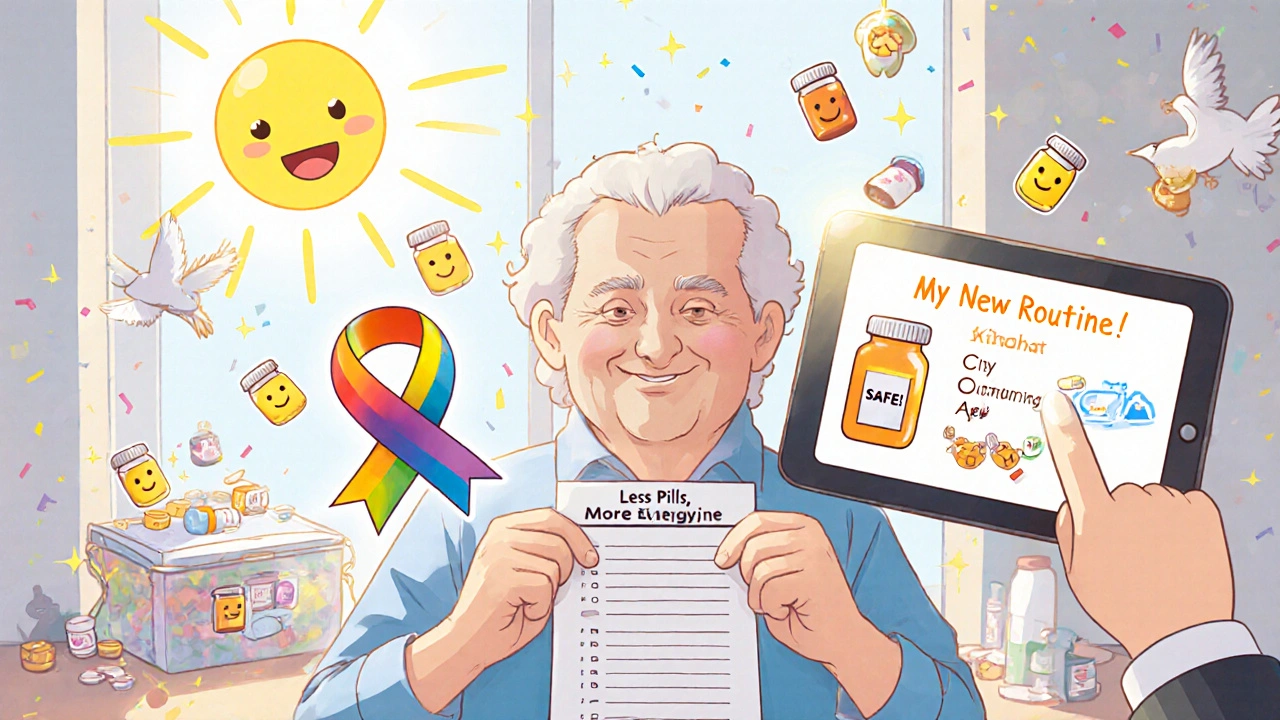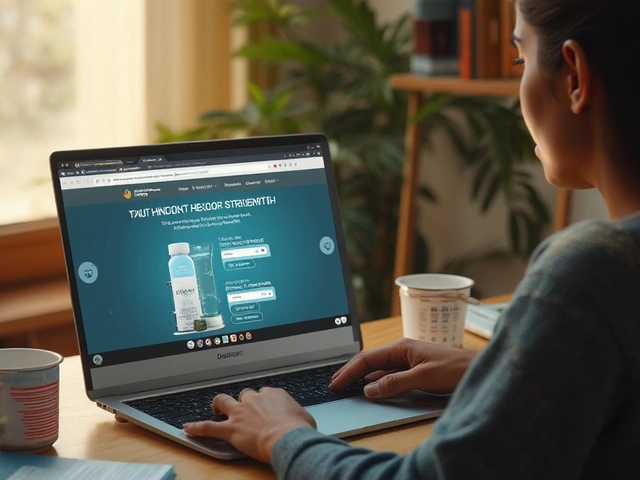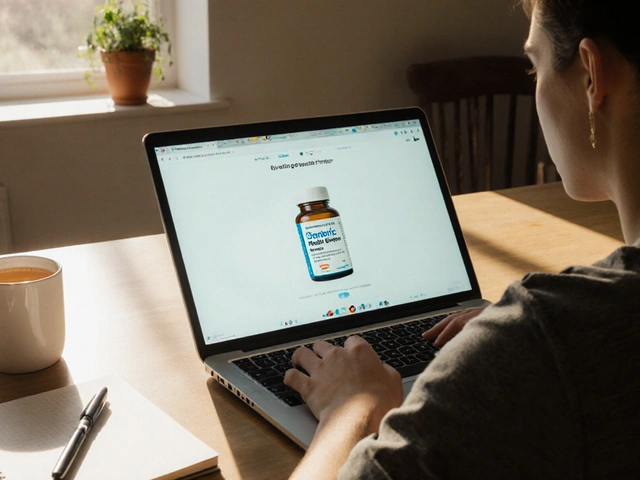Medication Safety Risk Calculator
Medication Safety Assessment
This calculator estimates your risk of medication-related issues based on the number of medications you take, your age, and medical history.
What Is a Brown Bag Medication Review?
A brown bag medication review is a simple but powerful way to make sure you’re taking the right medicines, in the right amounts, for the right reasons. You collect every pill, liquid, patch, inhaler, vitamin, supplement, and herbal remedy you take-no exceptions-and bring them all in a brown paper bag to your doctor or pharmacist. They go through each one with you, check for duplicates, dangerous interactions, outdated drugs, or meds you no longer need. It’s not a quick check-in. It’s a full 30 to 45-minute deep dive into your entire medication routine.
This isn’t just a good idea-it’s a proven safety tool. Studies show that when patients try to list their meds from memory, up to 87% get something wrong. A 2023 Home Helpers Home Care study found that in nearly 7 out of 10 cases, a brown bag review uncovered a serious error: a double dose of blood pressure medicine, a dangerous mix of sleeping pills, or a drug that was supposed to be stopped months ago. These aren’t small mistakes. They can lead to falls, confusion, hospital stays, or worse.
Why This Matters More Than Ever
If you’re 65 or older, you’re not alone if you take five or more medications. Nearly half of all seniors do. On average, they’re also taking almost two over-the-counter pills or supplements on top of that. That’s a lot of chances for something to go wrong. One drug might make another less effective. Another might cause dizziness when combined with a third. Some meds you’ve been taking for years might no longer be needed-but no one ever asked you to stop.
The numbers don’t lie. Medication errors cause up to 20% of all adverse drug events in hospitals. In 2022, the National Center for Health Statistics found that 54.6% of adults over 65 take five or more prescriptions. That’s over 15 million people. And every year, these errors lead to $528 billion in avoidable hospital costs. A brown bag review isn’t about blaming you. It’s about catching mistakes before they hurt you.
What You Need to Bring
Don’t guess. Don’t pick and choose. Bring everything. That means:
- All prescription bottles-even ones you haven’t used in months
- All over-the-counter pills: pain relievers, sleep aids, antacids, allergy meds
- All vitamins and supplements: fish oil, magnesium, vitamin D, ginkgo, melatonin
- All herbal remedies: turmeric capsules, elderberry syrup, echinacea
- All patches, inhalers, eye drops, creams, or injections you use regularly
- Any empty or nearly empty containers-you’ll be surprised how often people forget they still have one
Don’t worry if your meds are in different bags, boxes, or drawers. Just gather them all. The goal isn’t to look organized-it’s to be honest. If you’re not sure whether something counts, bring it anyway. Better to have too much than to miss something critical.
What Happens During the Review
The provider will lay everything out on the table. They’ll check each bottle for:
- Expiration dates
- Correct dosage and frequency
- Drug interactions (like mixing blood thinners with certain herbal supplements)
- Duplicates (two different prescriptions for the same drug)
- Medications with no clear purpose
- Side effects you might not have connected to your meds
They’ll ask you: “Why are you taking this?” That’s the key question. Many people keep taking pills because “the doctor said so,” but can’t remember why. If you can’t explain it, it might be time to stop.
You’ll also get a clear, updated list of what you should be taking-and what you shouldn’t. This list becomes your new reference. You’ll get a printed copy and often a digital version too. Some clinics now use apps that scan pill labels to cross-check against your electronic records.

Why Self-Reporting Fails
Most people think they know what they’re taking. But the data says otherwise. In a 2016 Agency for Healthcare Research and Quality (AHRQ) study, out of 10 to 15 patients who tried to list their meds verbally, only two got it right. That’s an 80-87% error rate.
One patient said he took “a blue pill for his heart.” He didn’t realize he was taking two different blue pills from two different doctors-one was a beta blocker, the other was a calcium channel blocker. Together, they dropped his blood pressure dangerously low. He was dizzy all the time. He thought it was just aging. The brown bag review caught it.
Electronic lists aren’t foolproof either. A 2016 study showed they’re only 45-60% accurate. Why? Doctors forget to update them. Pharmacies miss refills. Patients change doses without telling anyone. Your physical bag doesn’t lie. It’s real. It’s current. It’s undeniable.
How to Prepare Without Stress
It can feel overwhelming to gather everything. Here’s how to make it easier:
- Set a date for your review at least a week ahead.
- Put a reminder on your phone or calendar.
- Grab a brown paper bag (or any bag-color doesn’t matter).
- Go room by room: bathroom, kitchen, bedroom, nightstand, purse, car glove box.
- Don’t throw anything away until after the review.
- Write down any symptoms you’ve noticed: dizziness, nausea, sleepiness, confusion.
Some clinics give out free brown bags ahead of time. Others post flyers in waiting rooms with pictures of what to bring. If you’re unsure, call ahead and ask for a checklist. You’re not expected to be perfect. You’re expected to be honest.
What You Can Expect After
After the review, you’ll walk out with a clear plan:
- Some meds may be stopped-especially if they’re outdated, unnecessary, or risky
- Dosages may be adjusted
- Some drugs may be switched to safer alternatives
- You’ll get a simplified schedule: when to take what, and why
- You’ll be asked to come back in 3-6 months for a quick check-in
One 2023 survey of 1,247 seniors found that 72.4% said they finally understood why they were taking each medication after their review. And 63.8% had at least one unnecessary drug removed. That’s not just a win-it’s a relief. Less clutter. Fewer side effects. Better sleep. More energy.

Common Barriers-and How to Beat Them
Not everyone shows up with their bag. Why? Three big reasons:
- Embarrassment: Some people feel guilty about hoarding old meds. But providers see this all the time. There’s no judgment. Only help.
- Forgetfulness: One caregiver on AgingCare.com said her mom forgot her insulin pens. The review was useless. Solution: Keep your meds in one place, like a labeled plastic box.
- Time: It takes 30-45 minutes. That’s longer than a regular visit. But it’s worth it. You’ll save time later by avoiding hospital trips.
Providers who do this well use nonjudgmental language: “Many people keep old bottles-no problem. Let’s see what’s in there.” They also use visual aids-photos of common meds, sample bags, or even a real brown bag on display.
Who Should Do This-and Who Doesn’t Need To
This review is most helpful for:
- People 65 and older
- Those taking five or more medications
- People who’ve been hospitalized recently
- Those with memory issues or chronic conditions like diabetes, heart disease, or kidney problems
If you’re under 65 and take three or fewer meds regularly, you might not need a full brown bag review. But even then, it’s worth asking your provider: “Should I bring my meds to my next visit?” It takes five minutes to ask. It could save your life.
The Future of Medication Safety
Technology is helping, but not replacing, the brown bag. Apps that scan pill labels are now being used in CVS and Kaiser clinics. They can instantly check for interactions and update your records. But here’s the catch: 41.3% of dangerous errors in a 2024 study involved meds that weren’t in any digital system at all. That’s why the physical bag still matters.
By 2026, Medicare will require every Annual Wellness Visit to include a documented medication review. That means brown bag reviews are becoming standard-not optional. Hospitals, insurers, and the government are all pushing for this because it works. Kaiser Permanente saw a 22.3% drop in preventable hospitalizations after making it mandatory for seniors.
What to Do Next
If you or someone you care for is on multiple medications:
- Call your doctor or pharmacist and ask: “Do you do brown bag medication reviews?”
- If they say yes, schedule it now-don’t wait.
- If they say no, ask if they can refer you to a pharmacist who does.
- Start gathering your meds today. Put them in a bag. Don’t wait for the appointment.
This isn’t about being perfect. It’s about being safe. One review can mean fewer pills, fewer side effects, fewer trips to the ER. And that’s worth a little effort.







McKayla Carda
November 8, 2025I've done this with my mom and it was a game-changer. Turned out she was taking two different blood pressure pills that canceled each other out. We caught it before she fell.